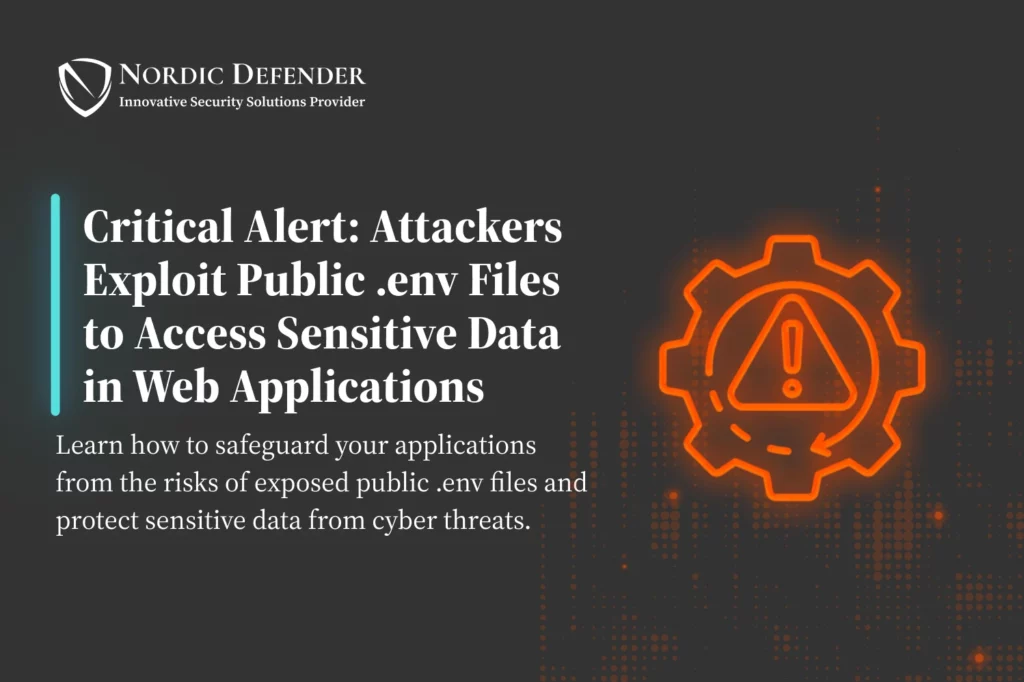In the rapidly evolving landscape of cybersecurity, new vulnerabilities continually emerge, demanding attention and action. One such vulnerability that has gained notoriety recently is the exploitation of publicly accessible .env files. As developers increasingly rely on these files to configure applications, the risk of exposure becomes a critical concern, with far-reaching implications for businesses and their data security.
What Are .env Files and Why Are They Important?
.env files are configuration files that store environment variables necessary for application deployment. They typically contain sensitive information, including:
- Database Credentials: Usernames and passwords for accessing databases.
- API Keys: Tokens that authenticate requests to third-party services.
- Secret Tokens: Used for session management and security features in applications.
These files play a vital role in the functionality of web applications, ensuring that they can communicate with databases and other services securely. However, the very nature of these files makes them a lucrative target for cybercriminals. When .env files are left unprotected or unintentionally exposed, they can serve as gateways for attackers to compromise entire systems.
The Mechanics of Exploitation
Recent trends indicate that attackers are using automated tools to scan the internet for exposed .env files. Such tools are capable of identifying publicly accessible repositories on platforms like GitHub or GitLab, where developers might inadvertently share their code along with sensitive configuration files.
Once an attacker gains access to a .env file, they can exploit the contained information in various ways:
- Data Breaches: With database credentials in hand, attackers can access sensitive customer data, leading to breaches that can have legal and financial repercussions for organizations.
- Service Impersonation: Using API keys, attackers can impersonate legitimate services, potentially causing financial losses or operational disruptions.
- Privilege Escalation: With secret tokens, attackers can escalate privileges within an application, gaining unauthorized access to critical components of the system.
Real-World Implications
The ramifications of exposed .env files can be severe. Organizations may face:
- Financial Loss: Breaches can result in hefty fines, especially if organizations fail to comply with regulations such as GDPR or HIPAA. Additionally, financial fraud through unauthorized transactions can occur.
- Reputation Damage: Trust is hard-earned and easily lost. A data breach can lead to significant reputational damage, causing customers to reconsider their relationships with compromised organizations.
- Operational Disruption: Attackers can disrupt services or hold data hostage, causing downtime and operational headaches for businesses.
Prevention Strategies
To mitigate the risks associated with exposed .env files, organizations should implement a multi-layered security approach:
- Robust Version Control Practices: Utilize a
.gitignorefile to prevent.envfiles from being tracked by version control systems. Regularly audit repositories for any accidental exposure. - Environment Configuration: Maintain separate configuration files for different environments (development, staging, production). Ensure that production settings are never shared in public repositories.
- Access Controls and Encryption: Limit access to
.envfiles to only those who need it. Employ encryption for sensitive information, ensuring that even if files are exposed, the data remains protected. - Regular Security Audits: Conduct periodic security audits and penetration testing to identify and rectify vulnerabilities within applications, including misconfigurations and exposed files.
- Developer Education: Provide ongoing security training for developers to instill best practices in coding and configuration management. This can significantly reduce the likelihood of exposing sensitive data.
Conclusion
The exploitation of publicly accessible .env files represents a significant and growing threat in today’s cybersecurity landscape. By understanding the mechanics of these attacks and implementing robust security measures, organizations can protect their sensitive information from falling into the wrong hands. Maintaining a proactive security posture is essential, as the consequences of neglecting this vulnerability can be devastating.
As cybersecurity threats evolve, so must the strategies to combat them. Consulting with cybersecurity experts can provide organizations with the insights needed to fortify their defenses and secure their applications effectively.
